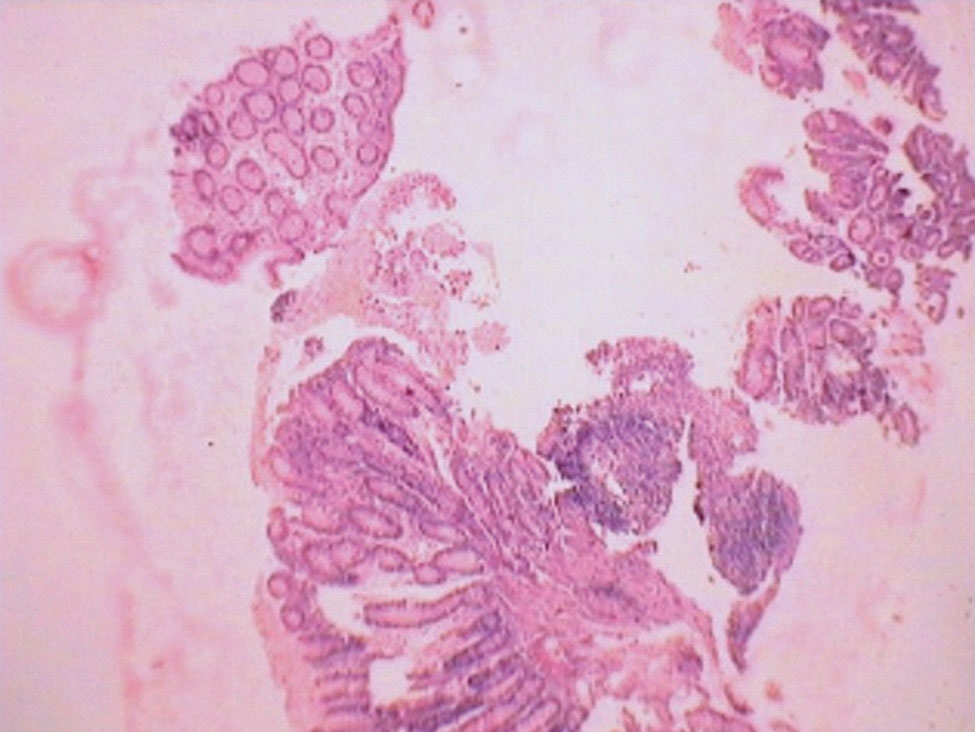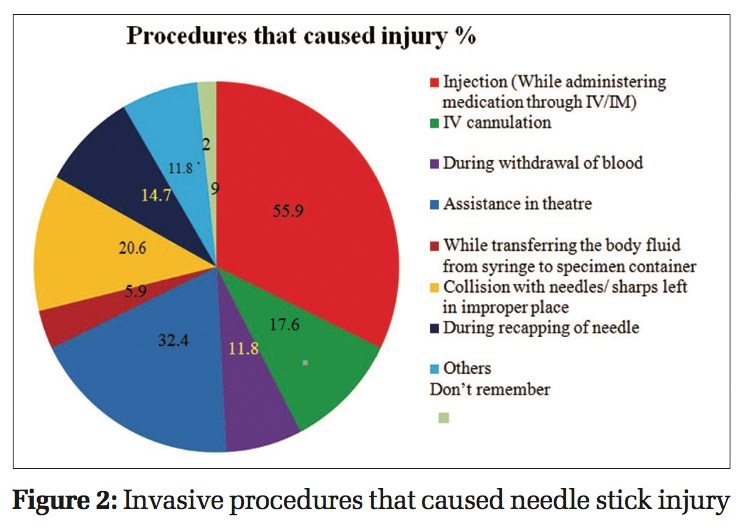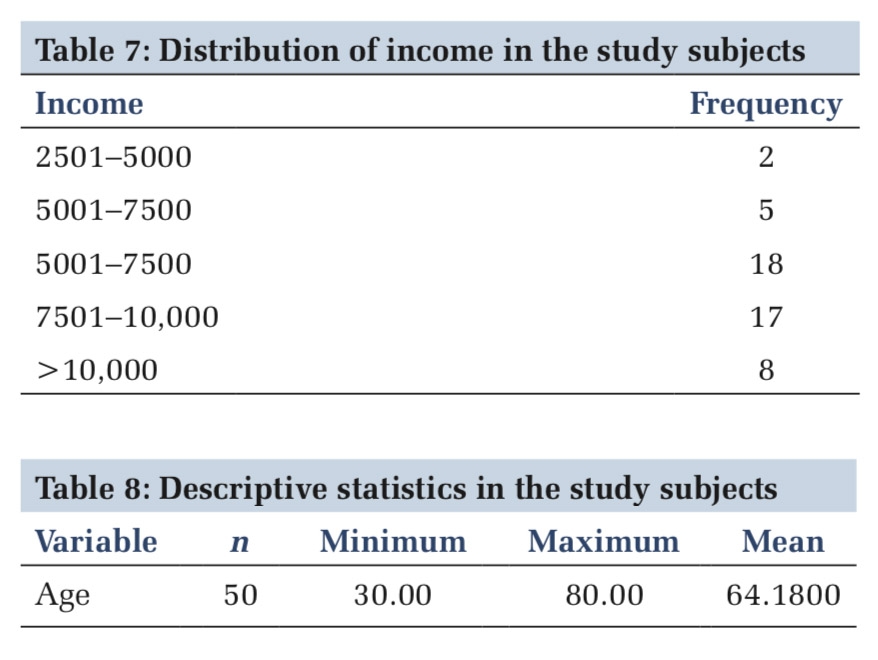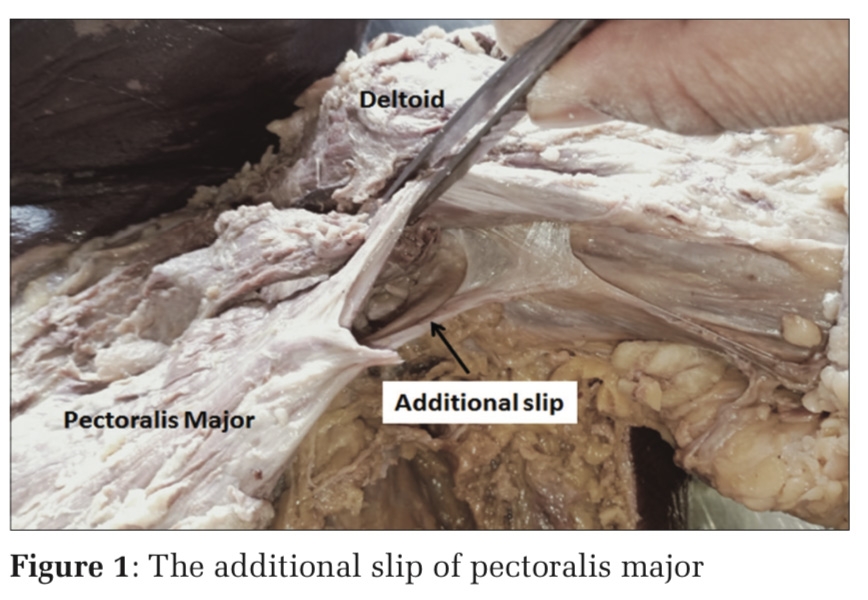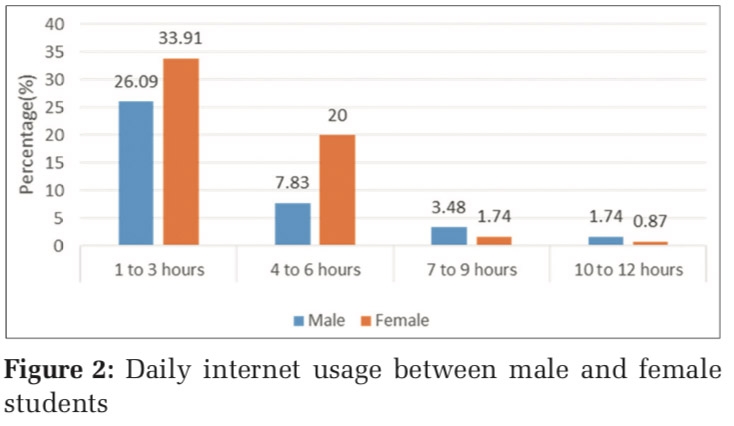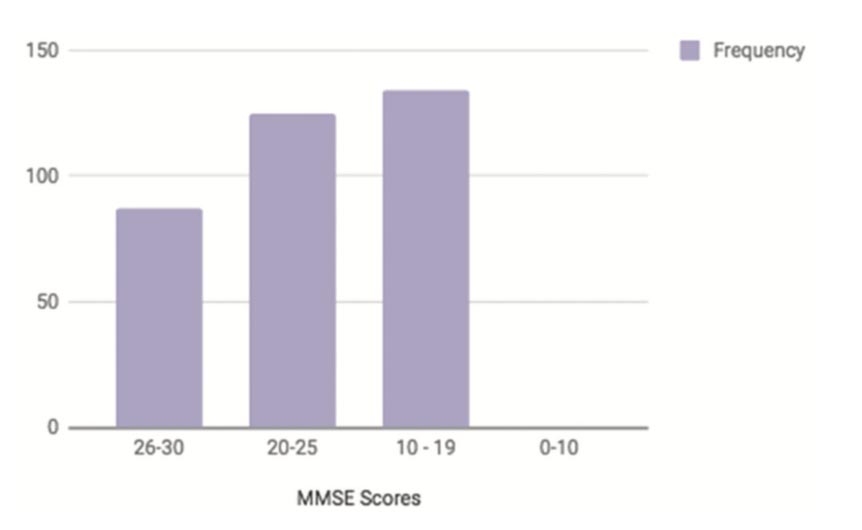INTRODUCTION
Anxiety and depression are the common mental disorders, affecting the general population upto 15% and also an important reason of disability in world with significant impact on social-economic status of affected individuals. 1, 2, 3 Data from the 2019 National Health Interview Survey (NHIS) in American population, estimated 1 in 6 adults aged 18 years and above have anxiety symptoms with predominant age group between 18-29 years. Also women were experiencing higher (19%) anxiety symptoms as compared to men (11.9%). 4
The National Mental Health Survey 2015-16 conducted across 12 states in India revealed that neurotic and stress-related disorders (F40–F48) having lifetime prevalence of 3.70 % and there is a large treatment gap nearly 84% for anxiety disorders raising concern. 5
Anxiety is a disorder having both psychological and physiological symptoms including fear, apprehension, poor concentration, and complaints related to different organ system. The commonly utilized medicines groups for the treatment of anxiety are benzodiazepines (BZDs), azapirones, selective serotonin reuptake inhibitors (SSRIs) and beta blockers.6 The BZDs are preferred for the treatment of generalized anxiety as they provide immediate relief, although for long term therapy, SSRIs were more effective as compared to BZDs.7 5-HT1A agonist serve as alternatives, that relieves generalized anxiety of mild-moderate intensity but is found to be ineffective in severe cases, the maximum benefits are delayed upto 2-3 weeks, acts by stimulating 5-HT1A autoreceptors8 Taking this into account, and the high potential for abuse and dependence, limits the utilization of BZDs as well as side effects of SSRIs reported in patients like loss of libido, insomnia, diminished arousal, delayed orgasm increased weight etc. 9 there is scope for newer strategies to serve as alternative in this condition. Hence, there is continuing search for newer compounds having lesser side effects due to narrow safety margin between an anxiolytic effect and unwanted adverse effects of BZDs. 10, 11
The involvement of central nervous system in causation of anxiety was hypothesized by participation of both adrenergic and serotonergic systems in terms of either over activity of adrenergic systems and/ or the dysregulation of serotonergic systems. 12 Animal studies based on targeted gene deletion of the 5-HT3A receptor subunit produces an anxiolytic phenotype in mice suggesting involvement of 5-HT3 receptor in developing anxiety like behaviour. 13 Earlier also studies have been done based on animal models of anxiety to study the role of 5-HT3 receptor antagonists as anxiolytic like effect. 14 The 5 HT3 receptor antagonists have lesser side effects and better tolerability with favourable pharmacological records in patients 15 similar to azapirones.
Hence the present study has been undertaken to elucidate anxiolytic activity (AA) of a 5-HT3 receptor antagonist, namely Ondansetron (OND) in mice models.
MATERIALS AND METHODS
Study was approved by IAEC (CPCSEA Reg.No- 1120/ac/07/CPCSEA) and animals were maintained according to the CPCSEA guidelines. Animals were kept in 12:12 hour light and dark cycle each, temperature 21-23 °C with relative humidity 50-60% conditions for at least 1 week before the experiments and were housed in groups of five. The animals were allowed free access to food (standard pellet ‘chow’ feed) and filtered water ad libitum. All behavioral tests conducted during light phase between 10.00 and 14.00. Swiss albino mice approximate of 6-8 weeks of age, weighing 20-40 gram were randomly divided into five study groups. All experimental groups included six animals with true efforts taken to limit the number and utilization of animals and to take a best possible way to maintain their comfort. Each animal was tested only once for each experiment. The AA was determined primarily by behavior based models, elevated plus maze (EPM) test 16, 17 and hole board test (HBT) 18 to achieve a level of accuracy in predicting clinical activity that could not be assessed by a single test alone and in fact there is heterogeneity behind the etiology of anxiety disorders with involvement of different neurobiological components for each type and it is quite unattainable that a single testing method can be sufficient to includes all parameters of complex expression anxiety. 19 An attempt was also made to rule out any bias due to influence of drug on locomotor activity, since we had also evaluated the parameter with photoactometer. At first, we carried out the dose response studies by using the mouse spontaneous locomotor activity test, EPM and HBT, to determine the effective and sub effective doses of these drugs without affecting the baseline locomotor status. These doses and times of administration were based upon previous reports. 20
In present study, Group I served as control and received 1 ml dw i.p, Group II to IV received OND 0.1 mg/kg, i.p., 0.5 mg/kg, i.p., 1mg/kg, i.p. respectively and Group V received diazepam 1mg/kg, i.p. as a standard anxiolytic. The apparatus in each model was cleaned with 10 % ethanol after the experiment with each animal to eliminate the likely bias due to body odor of previous animal. All behavioral testing were conducted in dimly lit and soundproof room during the same time of the day to minimize the confounding influence of any diurnal variations in animal spontaneous behavior.
Elevated Plus Maze (EPM)
EPM test validation for measurement of anxiety in rodents has been done in earlier studies.21 The EPM apparatus has two closed arms (50×10×40 cm) crossed with two open arms (50×10 cm) with an open roof, and connected to a central square (10×10 cm) to give it a plus sign appearance. The arms of the same types were located opposite to each other. The entire maze is raised 50 cm above the ground. After 30 minutes of drug administration, the mouse was placed individually in the central square of the maze facing one of the closed arms. 16
The number of entries and time spent in each type of arm (open/closed) was recorded for 5 min. 17 An entry was defined as the presence of all four paws in the arm.
Hole Board test (HBT)
It consists of square wooden board (40x40 cm) divided into 9 equal squares with 16 equidistant holes, raised 25 cm above the ground. The mouse was placed individually in the centre of the board for 3 minutes, and their exploratory behavior in the form of head dipping and crossing of the lines of the squares by both forepaws was recorded. A head dip was counted if both eyes disappeared into the hole. The drug or vehicle was administered 30 minutes before the test.
Measurement of Locomotor Activity (LA)
Neuropharmacological studies have been shown that there may be chances of false positive outcome in form of either general increase or decrease in LA in animal studies which was based on immobility time measurements and exploratory behavior assessment 22
For this reason, the basal LA was assessed to find out the effects of drug treatment as compared to control on locomotor scores. To rule out any effects of the test drugs on motor activity of tested animals, horizontal LA of control and test were recorded for a period of five minutes using photoactometer. 23
The photoactometer consisted of a square arena (30cm×30cm) with walls painted black and having photocells above the floor level and connected to a circuit with a counter. Before commencement of the experiment photocells were checked. The principle of photocell is that the rays of light falling on the photocells are cut off by the animals crossing the beam of light and photocell activated, a count is recorded by an electronic automatic counting device in the form of number of cut offs.
The animals were placed individually in the photoactometer cage and after initial familiarization period of two minutes, digital locomotor score was recorded for the next five minutes. The experiment arena was cleaned with dilute alcohol (70% v/v) and stays dried between the tests to get rid of odour of previous animals.
Statistical analysis
Data was analysed by using SPSS (20.0) software. The results were expressed as Mean ±SD. One-way analysis of variance (ANOVA) test were applied for statistical comparison. For all tests, significant main effects or interactions were resolved using post hoc ANOVAs with adjusted p-values and/or post hoc test (Tukey’s HSD). For statistical purpose the level of significance was set at P<0.05.
RESULT
In present study we found that OND increasing the number of entry and the time spent in the open arm as well as reduction in time spent in closed arms in EPM and increases the head dipping and crossing of line of square in the HBT, hence depicting AA. This increased number of entry and the time spent in the open arm in EPM and increased head dipping behavior and crossing of line of square in the HBT methods were statistically significant (P<0.0001).
The observation in EPM showed that numbers of entries in open arm were more in dose of 1 mg/kg (7.83±3.18) than 0.5 mg/kg dose (5.00±0.63) and 0.1 mg/kg (5.50±0.54) dose of OND as compared to control (5.00+0.89) and these observations were significant only with the higher dose of OND i.e. 1 mg/kg as compared to control but not with the dose of 0.1 mg/kg and 0.5 mg/kg of OND. (Table 1)
|
Drugs |
No. of entry |
Time spent (sec) |
||
|
Open arm |
Close arm |
Open arm |
Close arm |
|
|
Ondansetron 0.1 mg/kg |
5.50 ± 0.54 |
21.00 ±1.26 |
28.54 ± 1.46 |
186.55 ± 2.74 |
|
Ondansetron 0.5 mg/kg |
5.00 ± 0.63 |
11.66 ± 1.36 |
55.99 ±2.02 |
120.14 ± 1.70 |
|
Ondansetron 1 mg/kg |
7.83 ± 3.18 |
12.50 ± 2.42 |
72.84 ±3.99 |
98.04 ± 6.87 |
|
Diazepam 1 mg/kg |
14.5 ± 1.30 |
10.33 ±1.21 |
112.04± 3.94 |
53.94 ±1.61 |
|
Control |
5.00 ±0.89 |
17.83 ± 2.13 |
50.89 ± 0.73 |
158.08 ± 3.11 |
Effect of Ondansetron (0.1, 0.5 and 1mg/kg i.p.) and diazepam 1 mg/kg i.p. on mice behavior in EPM, measured as number of entries in open and closed arms and time spent in seconds in open and closed arms.
Values represents Mean ±SD. p<0.05 significant as compared to control group, number of animals n=6 per group.
In EPM test, the time spent in open arm by mice were also observed and found that with the dose of 1 mg/kg of OND it was (72.84 ±3.99) which was more compared to the dose of 0.5 mg/kg (55.99 ±2.02 ) and 0.1 mg/kg (28.54 ± 1.46) of OND as compared to control (50.89 ± 0.73). These observations were significant as compared to control with dose of 1 mg/kg and 0.5 mg/kg of OND. (Table 1)
In present study, we found that in EPM the duration of time spent in closed arm were gradually decreasing as the dose increased i.e. with the dose of 0.1 mg/kg it was (186.55 ± 2.74) seconds which was more than the 0.5 mg/kg (120.14 ± 1.70) and 1 mg/kg (98.04 ± 6.87) dose of OND. The time spent in closed arm in EPM test was statistically significant as compared to control (158.08 ± 3.11) with dose of 0.5 mg/kg and 1 mg/kg of OND. (Table 1)
In HBT, the head dipping count was more in dose of 1 mg/kg (28.83 ± 4.79) than 0.5 mg/kg dose (21.83+4.62) and 0.1 mg/kg (6.16+2.13) dose of OND as compared to control (4.83+1.94) and these observations were significant only with the higher dose of OND i.e. 0.5 mg/kg and 1 mg/kg as compared to control but not with the dose of 0.1 mg/kg of OND. (Table 2)
|
Drugs |
No. of head dipping |
Crossing of line of square |
|
Ondansetron 0.1 mg/kg |
6.16 ± 2.13 |
18.66 ±5.08 |
|
Ondansetron 0.5 mg/kg |
21.83 ± 4.62 |
47.66 ± 22.47 |
|
Ondansetron 1 mg/kg |
28.83 ± 4.79 |
53.33 ±4.92 |
|
Diazepam 1 mg/kg |
25.50 ± 3.78 |
56.33± 5.75 |
|
Control |
4.83 ±1.94 |
12.33 ±2.33 |
Effect of Ondansetron (0.1, 0.5 and 1mg/kg i.p.) and Diazepam 1 mg/kg i.p. on mice behavior in HBT, measured as number of head-dipping and crossing of line of square.
The exploratory behavior of mouse in form of crossing of line of square were also observed in HBT and was more evident with the test dose of 1 mg/kg of (53.33+4.92) OND as compared to dose of 0.5 mg/kg (47.66±22.47), and 0.1 mg/kg (18.66±5.08) of OND and control (12.33±2.33). However, these finding were significant only with the dose of 1 mg/kg and 0.5 mg/kg of OND as compared to control. (Table 2)
In EPM test, observation showed number of entries in open arm was significantly increased with diazepam 1 mg/kg (14.5 ± 1.30) as compared to control (5.00 ±0.89) as well as the time spent in open arm with diazepam 1mg/kg (112.04± 3.94) was more than the control (50.89 ± 0.73) and values were statistically significant. The reduction of time spent in closed arm was also significant with diazepam 1 mg/kg (53.94 ±1.61) as compared to control (158.08 ± 3.11). (Table 1)
The results showed that standard anxiolytic drug diazepam (1 mg/kg ) also significantly increased the number of head dipping (25.50 ± 3.78) as compared to control (4.83 ±1.94) and number of crossing of line of square (56.33± 5.75) as compare to control (12.33 ±2.33 ) in HBT. (Table 2)
Observations with OND in dose of 1 mg/kg showed lesser anxiolytic-like activity (ALA) in comparison to the standard drug diazepam 1mg/kg in both HBT and EPM, that was statistically significant (P<0.0001).
In our present study, spontaneous horizontal LA was not significantly affected by OND in all test doses (0.1, 0.5 and 1mg/kg i.p.), as well as with the standard drug diazepam (1 mg/kg i.p.) (Table 3)
|
Drugs |
Dosage |
Locomotor activity counts/5 min, Mean ± S.D |
|
Ondansetron |
0.1mg/kg |
296.64 +10.45 |
|
Ondansetron |
0.5 mg/kg |
302.24 + 11.64 |
|
Ondansetron |
1mg/kg |
288.38 +12.41 |
|
Diazepam |
1mg/kg |
295.00 +10.69 |
|
Control |
1 ml dw |
303.75 + 9.12 |
Effect of Ondansetron (0.1, 0.5 and 1mg/kg i.p.) and diazepam 1 mg/kg i.p. on locomotor activity score.
Values represents Mean±SD. p<0.05 significant as compared to control group, number of animals n= 6 per group.
DISCUSSION
In EPM model, avoidance of entry and staying in open arms and preference for the closed arms by animals indicates anxiety behavior. The EPM having a high validity as behavior based model to elicit ALA of medicines as it utilizes the natural stimulus like fear of facing a new open space and also fear of balancing on a narrow elevated alleys. Therefore, the medicines which produced effect of increased preference to entry as well as time spending in open arms without significantly changing the LA are considered to be anxiolytic- like medicines. 21 For evaluation of AA of non BZDs medicines also, EPM can be utilized as a tool. 24 In present study, the increased entries in open arm and increased time spent in open arm as well as decreased time spent in closed arm in EPM indicating AA of OND. Wright IK, et al found similar observations in EPM on rats. 24 Also, Shenoy S et al 25 in a comparative animal study between the OND, granisetron and alprazolam as standard anxiolytic, found that OND at the dose of 1 mg/kg showed ALA in EPM which is in accordance with our study. However, the change in number of entries in arms (open/close) was not found to be significant in their study while in our present study we have found the significant changes with dose of 1 mg/kg of OND for the same but not with the lower dose i.e. 0.5 mg/kg and 0.1 mg/kg of OND.
An earlier study by Nevins ME and Anthony EW has shown that 5 HT3 receptor antagonists OND and granisetron both reduced the startle response in rats which was potentiated by the fear suggesting anxiolytic like effects of 5 HT3 receptor antagonists. 26
The HBT observation in our study is in accordance with the study by Kurhe Y and Mahesh R 27 in a comorbid depression and anxiety associated with obesity model i.e. OND at the dose of 0.5 mg/kg and 1 mg/kg significantly increased the number of head dipping as well as increased the crossing of line of square suggesting potential ALA of OND. Study by Gupta D et al 28 based on depression and anxiety like behavior in streptozocin induced diabetic mice model found that the OND at the dose of 1 mg/kg significantly increased the number of head dipping in HBT but not with the dose of 0.5 mg/kg of OND which is in accordance with our study.
Kurhe YV et al have found anxiolytic potential in EPM and HBT and other behavioral test in mice by using novel 5HT3 receptor antagonist. 29 However, the mechanism of action was not exactly known but literature suggest that blockade of post synaptic located 5HT3 serotonergic receptor increases the neurotransmission of serotonin which act through allosteric modulation of serotonergic system on other serotonin receptor 5HT1 and 5HT2 leads to development of anti anxiety effect. 30
In conclusion, the present study revealed that OND may have ALA in dose dependent manner although not equivalent to standard anxiolytic diazepam. The possible mechanism is attributed to augmented serotonergic transmission in various part of the brain by OND. 20
However, the exact molecular mechanism behind anxiolytic action of OND is not clear and yet to establish. Although present study provides a potential alternative for treatment of anxiety keeping the concern of risk of abuse and dependence liability of BZDs in long duration therapies.



